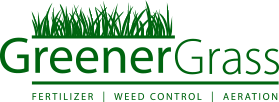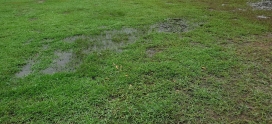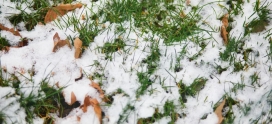
Prevent Snow Mold With These Essential Winter Lawn Care Tips
Did you know that part of seasonal lawn care services in Calgary includes prepping your lawn for the winter? Most homeowners aren’t aware of how much damage snow, ice, and freezing temperatures can do to their lawn.
As we head into the winter months, professional lawn care services are shifting focus to protect lawns during cold weather and ensure it is in good shape come growing season in the spring.
One of the most damaging things to look out for in particular is snow mold. Keep reading to learn more about the signs and symptoms of snow mold on your lawn and how to prevent it this winter.
What is Snow Mold?
Snow mold is a fungal disease that affects lawns during the winter months, typically appearing once the snow melts in early spring. It thrives in areas where snow has accumulated and remained for a long time, particularly in areas with high humidity or poor drainage.
How snow mold forms:
Snow mold begins to form when snow covers the grass for a prolonged period, which is not uncommon for cold climates like Calgary. The moist, cool environment creates the perfect conditions for fungi to grow.
What happens when snow mold forms:
As the snow melts, it leaves behind patches of discoloured, matted grass that may appear gray or pink in colour, often with a fungal growth visible on the surface. Gray snow mold is less damaging, and your grass may recover. On the other hand, pink snow mold is more aggressive and can kill grass all the way to the roots.
Signs & Symptoms of Snow Mold on Your Lawn
What makes snow mold particularly challenging is that its effects aren’t visible until the snow melts, often leaving homeowners unaware of the problem until it’s too late. As the ice and snow recede, you may notice patches of white, gray, or pink that might look like snow but are actually signs of mold. Examine the area closely – snow mold is often matted or crusty.
How to Prevent Snow Mold
Once snow mold appears, it can be hard to fix, which is why prevention is key.
- Prep your lawn for winter – This prep work can include the last mow in the fall season, which is typically left at 2 to 2.5 inches high. Grass that is left too tall can invite snow mold and grass that is cut too short can be impacted by the cold weather.
- Fertilize before winter – Professional lawn care services include fertilizing your lawn to keep it nourished during the cold season. However, timing is everything when it comes to fertilizing for the winter. Professionals will know when to fertilize the lawn before the real snowfall sets in.
- Clean your lawn – In Calgary, it’s not uncommon to experience winter months with no snow or warm Chinook weather that melts all of the snow on the ground. Every time the snow clears, be sure to remove debris, leaves, sticks, and other items. Some homeowners choose to leave the cleaning when winter is officially over and the snow is completely cleared. However, if a heavy snowfall comes and buries these objects, they can crush the grass and leave your lawn susceptible to disease.
- Reduce traffic and avoid placing heavy equipment on your lawn – On these warm winter days when the snow has melted, it’s tempting to get in your yard with the kids and play. Keep in mind that this causes more stress on your grass, so we recommend limiting or avoiding foot traffic altogether. If you’re doing work with heavy equipment, avoid placing the equipment on your lawn and instead place it on your porch or patio.
- Avoid mowing the lawn – Grass typically stops growing in late October or early November, depending on the temperature. Your lawn doesn’t need to be mowed during the winter, even if there is no snow on the ground. In fact, mowing the grass too short during the winter can damage your lawn and put more stress on it when the snow eventually comes.
- Regular dethatching – Thatch consists of dead grass and soil that accumulates just beneath the grassy layer. Removing it allows richer soil to provide the nutrients your lawn needs, which helps prevent snow mold and promotes healthy grass growth in the springtime.
- Ensure proper drainage – One of the most effective ways to prevent snow mold is to make sure that melting snow and excess moisture can drain properly. If your lawn lacks proper drainage, moisture will pool and create the perfect environment for snow mold to thrive. Throughout the winter, make sure melting snow is draining as it should. This highlights the importance of aeration, improving soil quality, and reducing thatch build-up, all of which are included in professional lawn care services.
- Remove heavy snow piles – If you live in an area that experiences heavy snowfall like Calgary, be mindful when clearing snow from your driveway and walkways. Avoid piling large amounts of snow on your lawn, as these piles can create excess moisture and encourage the development of snow mold.
Expert Lawn Care Services in Calgary
When it comes to maintaining a healthy lawn and preventing snow mold, sometimes it’s best to call in the experts. Lawn care can be complex, requiring an understanding of soil health, irrigation, pest control, and seasonal treatments.
While DIY treatments may work for some, professional lawn care services and specialists have the knowledge, tools, and experience to tackle more challenging issues before they get worse.
Whether it’s for regular maintenance or a specific problem, call Greener Grass today for professional lawn care services in Calgary.

 family owned and operated for 39 years
family owned and operated for 39 years



